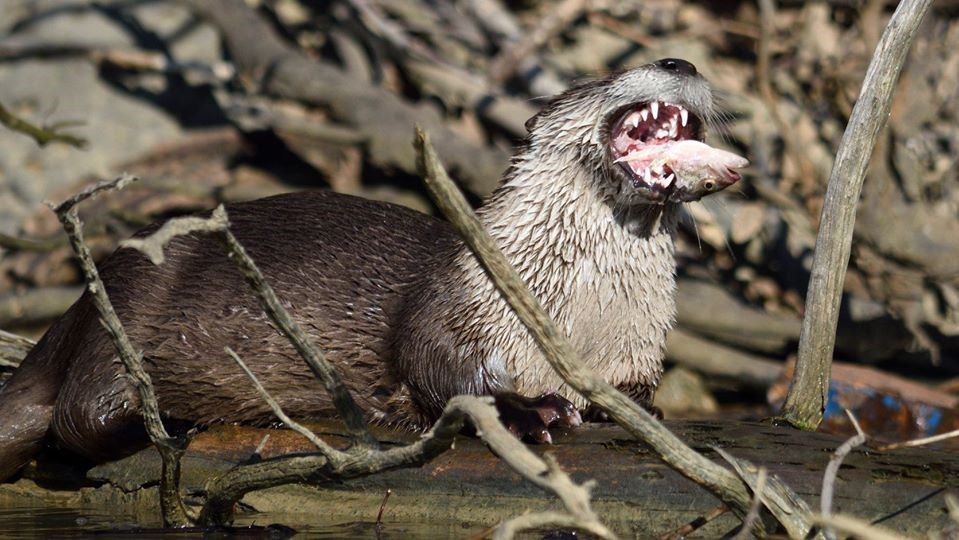SMITHSONIAN ENVIRONMENTAL RESEARCH CENTER
The Secret Lives of River Otters (And Their Parasites)
If you live along the water but have never seen a river otter, it’s probably because they’re mostly nocturnal, and very shy. But these secretive creatures, and their parasites, hold lots of clues for scientists looking to understand disease.
As a kid, I loved being in the water. It didn’t matter if it was a pool, the ocean or a lake. And I spent as much time as possible swimming or diving under the waves at the beach. I just didn’t want to get out of the water, so my mom called me a fish. There are so many times I wished I was a fish, or a mermaid, so I could stay underwater, exploring the wonders under there!
It turns out, unlike me, there are very few aquatic animals that are as comfortable on land as they are in the water. Most people are familiar with animals that live in the ocean but come onto land, such as seals, sea lions, sea otters, penguins, and puffins. However, you can’t go inland and see one of those. Most folks are also probably familiar with the cute and fuzzy sea otters of the West Coast of the U.S. (think “cuddle party” from Finding Dory). But there are otters in the Central and Eastern U.S. that are sleek and adorable too!
River otters (the scientific name is Lontra canadensis) live in lots of different waterways, including freshwater streams, ponds, estuaries and along the coast. They like undisturbed wooded habitat along water that has enough trees and brush to provide cover for their dens and for coming out to rest and groom. If you live along the water or have visited often and are wondering why you have never seen river otters, it’s because they are primarily nocturnal, meaning they are awake at night and sleep during the day. They're also generally very shy.
As I’ve come to discover, there are many reasons to study river otters. One of the most important is that they are apex predators, at the top of the food chain. By learning about what otters are eating, scientists can figure out what other animals are in the area. As a bonus, we can also learn about the parasites that are present too. Parasites are my passion and main topic of research in the Marine Disease Ecology Laboratory at the Smithsonian Environmental Research Center.
Have you ever heard of something being “zoonotic” (pronounced zoo-knot-ick)? This word comes from the Greek, zoo meaning animals and notic meaning diseases. There are diseases, caused by parasites, that can impact both wild animals and humans, which scientists refer to as zoonotic diseases (caused by zoonotic parasites).
Otters can get zoonotic parasites like worms from the fish that they eat, just like humans. If otters become infected with parasites from fish, then there is the potential for humans to get those parasites if they eat the same fish. All this means that scientists can study one animal, like the river otter, to learn about the other animals and parasites that live in the same area. This can help inform how to keep human food sources safe. If you are curious about how scientists might study the diet of river otters, stay tuned for the sequel post later this week!
Read Part 2: River Otters Take "Party Pooping" To A New Level

:focal(210x118:211x119)/https://tf-cmsv2-smithsonianmag-media.s3.amazonaws.com/blogging/featured/River_Otter_2_Matthew_Fryer.jpg)

